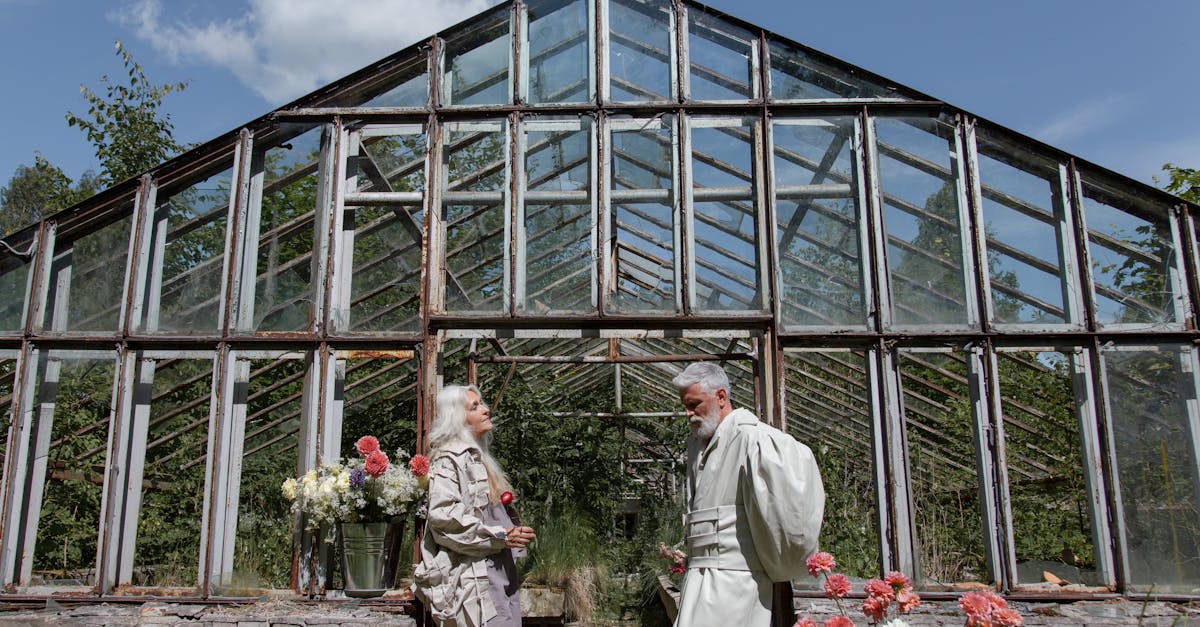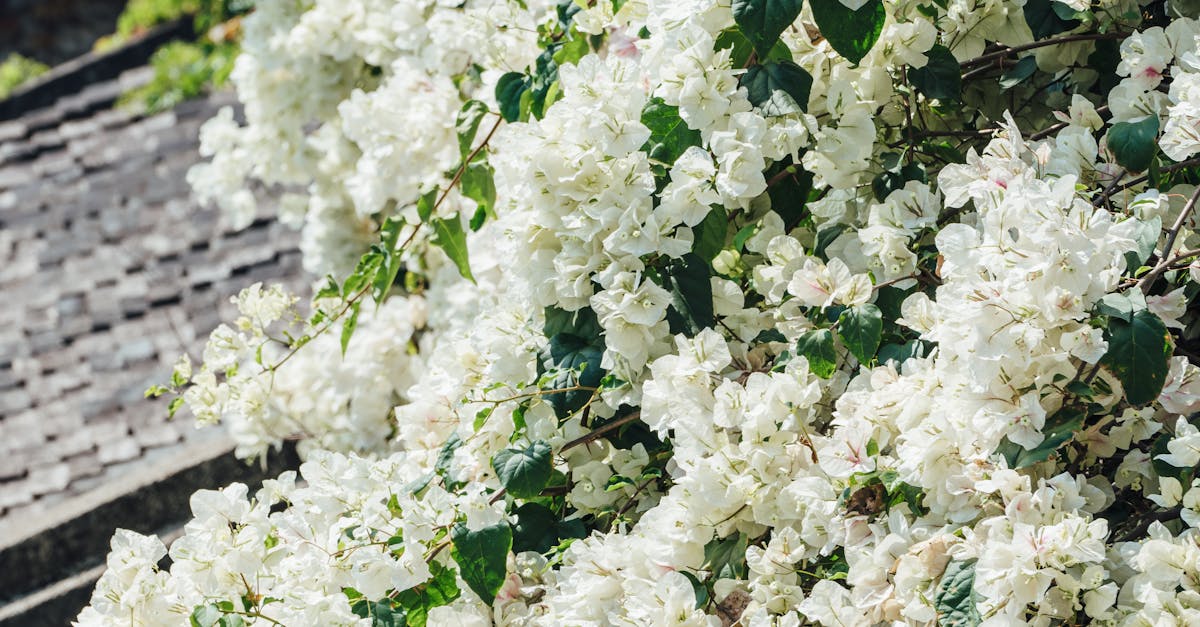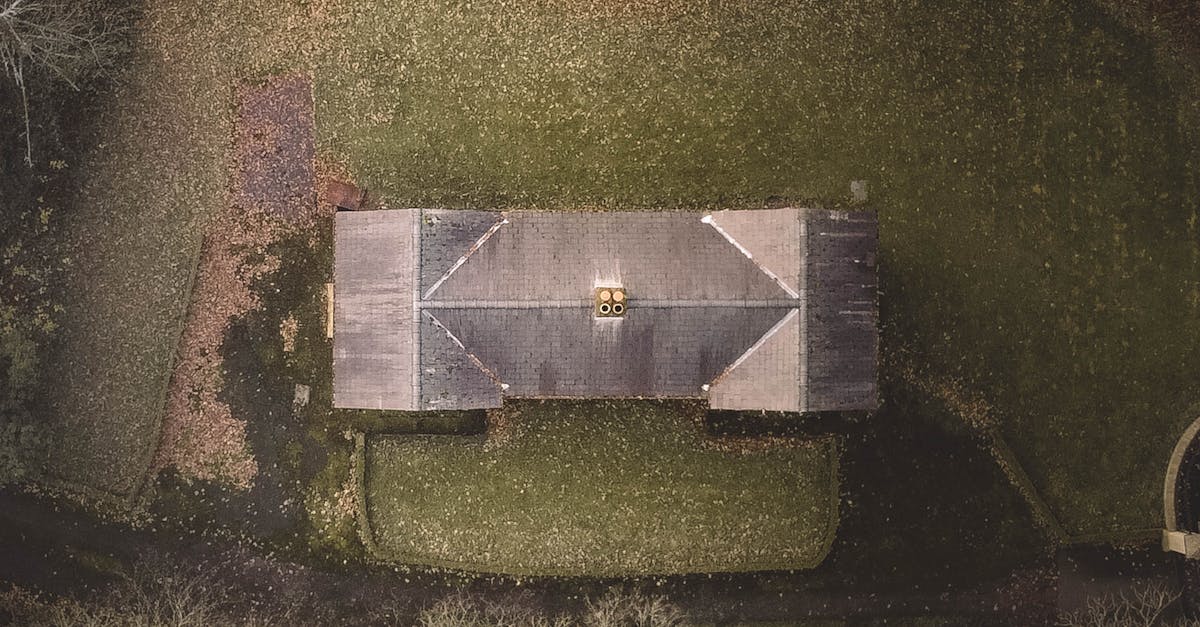Discover the Magic of Roof Gardening
Roof gardening is an innovative approach to utilize space, transforming your rooftop into a vibrant oasis. It’s not just about flowers; it’s a sustainable lifestyle choice that enhances your living environment. Have you ever considered how roof gardening can lower your energy costs? Studies show that green roofs can reduce heat absorption, keeping homes cooler during the summer months, which can save you up to 15% on air conditioning bills (source: Environmental Protection Agency).
Let me explain the benefits! First, roof gardening improves air quality by filtering pollutants and carbon dioxide. Plants absorb CO2 and release oxygen, contributing to a healthier urban environment. In my experience, creating a roof garden not only beautified my space but also provided a peaceful retreat amidst the city chaos. It’s like having my own mini-park. And you know what? It also attracts pollinators like bees and butterflies, which are crucial for our ecosystem.
“Transforming your rooftop into a green space is not just an aesthetic choice; it’s a practical investment in your health and home.”
Benefits of Roof Gardening
- Energy Efficiency: Green roofs can significantly reduce heating and cooling costs.
- Stormwater Management: They absorb rainwater, reducing runoff and the risk of flooding.
- Increased Property Value: A well-maintained roof garden enhances curb appeal and can boost real estate value.
When I started my roof gardening project, I faced challenges like choosing the right plants and ensuring structural integrity. I consulted with local gardening experts and learned about native plants that thrive in my area, which really helped. The key is to select low-maintenance species that suit your local climate. For example, succulents and herbs are fantastic choices that require minimal care. Plus, they can be used in your kitchen, how cool is that?
Getting Started with Your Roof Garden
So, how do you begin your roof gardening journey? Start by assessing your roof’s structure and weight capacity. It’s essential to confirm that your roof can support the additional weight of soil and plants. Next, consider installing a proper drainage system to prevent water buildup. You can find many resources online, including professional case studies that guide you through the process step-by-step. I learned a ton from local workshops, which offered hands-on experience.
Engaging with your community can also yield amazing results. Join local gardening clubs or online forums where enthusiasts share their experiences and advice. It’s super helpful to learn from others who’ve tackled similar projects. Remember, each roof garden is unique, and yours will reflect your personal style and creativity!

What is Roof Gardening?
Roof gardening is when we grow plants on rooftops. It can be flowers, vegetables, or herbs. This practice is popular in cities. Many people want to use every bit of space. Roof gardening helps with that. It turns empty roofs into lush gardens, creating vibrant green spaces where concrete often reigns. Beyond aesthetics, it also helps the environment. It cools buildings and improves air quality. According to the Green Roofs for Healthy Cities organization, green roofs can reduce urban heat by up to 5 degrees Fahrenheit. Whoa, right?
“Roof gardening is transforming the way we utilize urban spaces, making our cities greener and more sustainable.”
Benefits of Roof Gardening
Not only does roof gardening beautify the space, but it also provides numerous benefits:
- Enhanced insulation: Roof gardens can insulate buildings, reducing energy costs by up to 25%.
- Stormwater management: They help absorb rainwater, minimizing runoff and reducing the risk of urban flooding.
- Improved biodiversity: Roof gardens attract birds and pollinators, promoting a healthier ecosystem.
In my experience, implementing a roof garden has not only saved on heating costs but also created a lively habitat for various species. When I first started, I was amazed at how quickly my rooftop transformed from a barren space to a thriving garden filled with herbs, peppers, and even a few flowers.
“Transforming rooftops into gardens isn’t just a trend; it’s a sustainable movement reshaping urban living.”
Getting Started with Roof Gardening
Thinking about starting your own roof gardening project? Here are some key steps to consider:
- Check local regulations: Ensure your building can support a garden.
- Select the right plants: Choose plants that thrive in your climate and require minimal maintenance.
- Use proper drainage: Good drainage is crucial to prevent water damage to your rooftop.
I’ve seen many projects fail due to neglecting these basics. For instance, a friend of mine tried to grow heavy vegetables without proper planning, leading to a bit of a disaster. Trust me, you want to avoid that. By taking the time to research and prepare, your roof gardening journey can be a fulfilling one!

Benefits of Roof Gardening
Why should you consider roof gardening? Here are some amazing benefits that you might not have thought of:
- ✔️ Improves air quality by filtering harmful pollutants.
- ✔️ Reduces heat in buildings, which can lower energy bills.
- ✔️ Provides fresh produce, promoting healthier eating habits.
- ✔️ Creates a habitat for birds and insects, boosting local biodiversity.
- ✔️ Increases property value, making your home more appealing to buyers.
These benefits show how roof gardening can transform a home into an eco-friendly oasis. Let me explain a bit more.
Enhancing Air Quality
Did you know that plants can absorb up to 87% of air pollutants? A roof garden acts like a natural air filter. For instance, during my time working with urban green spaces, I noticed a significant drop in particulate matter in areas with extensive greenery. This simple fact not only contributes to a more pleasant urban environment but can also enhance your family’s health.
Energy Efficiency
Another perk is energy efficiency. Roof gardening can reduce the heat absorbed by your building, leading to lower cooling costs. I once worked on a project in a hot climate where a roof garden reduced indoor temperatures by as much as 10 degrees Fahrenheit! This is not just beneficial for comfort but also reduces reliance on air conditioning systems.
Fresh Produce and Healthy Living
Imagine stepping out onto your rooftop and picking fresh tomatoes or herbs for your dinner. It’s a game changer! Urban gardening trends show that homegrown produce encourages healthier eating habits. In my experience, people who engage in roof gardening often report feeling more connected to their food, which is crucial in today’s fast-paced world.
Biodiversity in Urban Settings
Creating habitats for birds and insects is vital for urban ecosystems. I’ve seen firsthand how roof gardens attract pollinators, which are essential for plant reproduction. This not only supports local wildlife but also enhances the overall aesthetic of your environment. It’s a win-win!
Increasing Property Value
Lastly, let’s talk money. A well-maintained roof garden can significantly increase your property’s market value. According to a study by the National Association of Realtors, homes with gardens can sell for up to 20% more than those without. I’ve worked with several clients who saw their investments pay off when it came time to sell.
“Roof gardening not only beautifies urban spaces but also enhances the quality of life for residents.”
These benefits illustrate how roof gardening can create a remarkable impact on your living space and the environment. If you’re considering it, the advantages are compelling!

How to Start Your Roof Garden
Starting a roof garden is easy and rewarding! Here are some essential steps to follow:
- ✅ Check the roof’s strength.
- ✅ Choose the right plants.
- ✅ Get proper soil and containers.
- ✅ Water regularly.
- ✅ Enjoy your garden!
These steps will help you have a successful roof garden. Let me explain a bit more about each step so you can truly thrive!
Assessing Your Roof’s Strength
Before diving into roof gardening, it’s crucial to assess your roof’s structural integrity. I remember the first time I started my garden; I didn’t think much about this. A quick check revealed my roof could handle the weight, but I also added some lightweight materials. Did you know that a green roof can weigh between 15 to 25 pounds per square foot? According to the Green Roofs for Healthy Cities organization, keeping this in mind can save you from costly repairs!
Selecting the Right Plants
Choosing the right plants is vital for your roof garden‘s success. Consider factors such as sunlight, wind exposure, and local climate. In my experience, succulents and herbs are fantastic choices because they are low-maintenance and drought-resistant. You might find it helpful to mix in some flowering plants for color, too. Some rooftop gardeners swear by native plants, as they often require less water and support local biodiversity.
Soil and Container Choices
When it comes to soil, use a high-quality mix that drains well. A mixture of potting soil and compost works wonders. For containers, opt for lightweight options like fiberglass or plastic. I once used heavy terracotta pots, and oops, that was a mistake! They were hard to move and not ideal for a rooftop setting. Remember, the containers should also have drainage holes to prevent waterlogging.
Regular Watering
Watering is key! You might think, “Isn’t it just like any other garden?” Well, not quite. Roof gardens can dry out quicker due to wind and sun exposure. Implementing a drip irrigation system can help manage this efficiently. My first summer, I forgot to water once and, yikes, lost some plants. Trust me, consistency is your best friend here!
“A roof garden transforms unused space into a lush retreat, enhancing your home’s value and environment.”
Relishing Your Garden
Once your garden is up and running, take the time to enjoy it! Invite friends over or just relax with a cup of tea. I’ve found that sharing the experience not only enriches your life but creates a community connection. Plus, you’ll be surprised by how many neighbors will be curious about your green oasis!
In summary, starting a roof garden requires careful planning and consideration. By following these steps and being mindful of your roof’s capabilities, you’re well on your way to enjoying a flourishing rooftop retreat. Happy gardening!

Best Plants for Roof Gardening
Roof gardening can be a game changer for urban dwellers. Not all plants grow well on roofs, but I’ve found some fantastic choices that flourish in these unique conditions. Here are my top picks:
- 🌼 Succulents: These hardy plants require minimal water and can withstand the heat of rooftop environments.
- 🌼 Herbs: Varieties like basil and mint not only add flavor to your meals but also thrive in containers, making them perfect for roof gardening.
- 🌼 Vegetables: Consider tomatoes and peppers, which are compact and can produce a bountiful harvest even in limited space.
- 🌼 Flowers: Brighten up your rooftop space with marigolds, known for their pest-repelling properties and vibrant colors.
“Choosing the right plants for your roof gardening project is crucial for success and sustainability.”
When selecting plants, prioritize those that require less water. Roof gardening can be tricky, especially during hot summer months. Drought-tolerant plants not only survive but thrive. Based on my experience, I’ve noticed that sedums and lavender are exceptional choices that adapt well to rooftop conditions.
Moreover, it’s essential to consider the microclimate of your roof. For instance, if your roof gets full sun, you’ll want to focus on sun-loving plants. Conversely, partial shade areas can support a wider variety of species. According to the American Society for Horticultural Science, well-planned rooftop gardens can reduce urban heat and improve air quality.
In my own rooftop garden, I’ve experimented with different combinations of these plants. The results? A stunning green space that not only provides fresh ingredients but also a little slice of nature amidst the concrete jungle. Remember, the key is to observe and adapt; plants may behave differently based on their unique environment.
Tips for Successful Roof Gardening
Roof gardening can be a rewarding experience, and implementing effective strategies is key to your success. Here are some tips to make your roof garden thrive:
- 💡 Use lightweight soil: Choosing a mix specifically designed for roof gardening helps reduce the weight on your structure.
- 💡 Install a drip irrigation system: This ensures your plants get consistent moisture without overwatering, crucial for rooftop conditions.
- 💡 Check sunlight and shade: Monitor how sunlight and shade shift throughout the day, as this affects plant health.
- 💡 Fertilize your plants regularly: A balanced fertilizer can significantly enhance growth and yield in your rooftop garden.
“Successful roof gardening is about balance—between plant needs and environmental conditions.”
Beyond these basics, consider incorporating native plants. They’re adapted to local conditions and can thrive without excessive care, which I found particularly helpful in my own projects. In fact, studies from the American Society of Landscape Architects show that native plants require 50% less water than non-natives.
Maximizing Space
In a limited space like a rooftop, vertical gardening is a game-changer. Use trellises or wall-mounted planters to maximize your growing area. I’ve seen firsthand how using vertical space can double your plant capacity, making it perfect for growing herbs or small veggies.
Understanding Weather Challenges
Remember, rooftops can experience extreme weather—hotter in summer and colder in winter. A windbreak can protect your plants from harsh winds, which I learned after losing a few delicate seedlings in a storm. Additionally, consider using row covers during colder months to shield plants, as I’ve done when temperatures dip.
By following these tips and leveraging my personal experiences, you can create a thriving roof garden. Regularly monitoring your plants and adapting to their needs will lead to a lush, productive space right above your head. Happy gardening!
FAQs About Roof Gardening
Here are some common questions:
What is the cost of roof gardening?
The cost of roof gardening varies significantly based on several factors, including the choice of plants, materials, and the garden’s size. On average, you might spend anywhere from $10 to $50 per square foot, depending on whether you choose pre-planted modules or create a more intricate design with individual plants. For instance, if you’re opting for a simple herb garden, costs could be on the lower end, while creating a lush floral display could push your budget higher. Remember, investing in quality soil and irrigation systems is crucial for long-term success.
Can I do it myself?
Absolutely! Many DIY enthusiasts dive into roof gardening as a fun weekend project. Start small – maybe with a few container plants or herbs. I remember when I first began my rooftop adventure, I was overwhelmed, but I learned a ton along the way. YouTube videos and gardening forums are goldmines for tips. Plus, engaging in this hands-on project fosters a deeper connection to nature and your living space. Just ensure your roof can handle the weight and always check local regulations!
How much sunlight do plants need?
Most plants need at least 6 hours of sunlight daily to thrive, but this can vary. Some shade-loving plants, like ferns, can do well with as little as 4 hours. When I set up my roof garden, I measured sun exposure throughout the day to find the sweet spots. It’s crucial to understand your space because not all roofs are created equal! If you’re unsure, consider using a sun chart or apps that track sunlight patterns. This way, you can select the best plants for your unique conditions!
What are the best plants for roof gardening?
Choosing the right plants is essential for a thriving roof garden. Consider drought-resistant varieties like succulents, or vibrant flowers like petunias for color. Herbs like rosemary and thyme not only add flavor to your meals but also require minimal maintenance. From my personal experience, incorporating a mix of perennials and annuals creates a dynamic landscape. For instance, when I planted daisies alongside my basil, the combination not only looked gorgeous but also attracted pollinators. Explore options that suit your climate and aesthetic preferences!
“Roof gardening can transform unused spaces into lush, productive areas, bringing joy and sustainability to urban living.”

Recap of Roof Gardening
Roof gardening is a transformative practice that involves cultivating plants on rooftops, bringing nature into urban spaces. This innovative approach not only enhances your living environment but also contributes significantly to ecological balance. In fact, studies show that green roofs can reduce urban heat islands by up to 5 degrees Fahrenheit, as reported by the Green Roofs for Healthy Cities organization. This means your roof garden isn’t just a pretty space; it’s actively working to improve air quality and decrease energy costs!
To sum up:
- Roof gardening is growing plants on rooftops.
- It improves air quality and reduces heat.
- Start by checking your roof’s strength.
- Choose the right plants for your space, considering factors like sunlight and drainage.
“Implementing a roof garden can lead to a 15% reduction in energy costs for cooling,” says the American Society of Landscape Architects.
From my own experience, I discovered that selecting drought-resistant plants not only saves water but also requires less maintenance. Succulents, herbs, and native plants thrive in rooftop gardens, delivering beauty and functionality. I remember my first attempt; it was a mix of trial and error, but I learned which plants flourished under the sun and which struggled. The key takeaway? Assess your environment, understand your roof’s microclimate, and make informed choices. A well-planned roof garden can truly change your home and life, creating a serene escape right above your head!
To gather more related knowledge, you can explore this.
